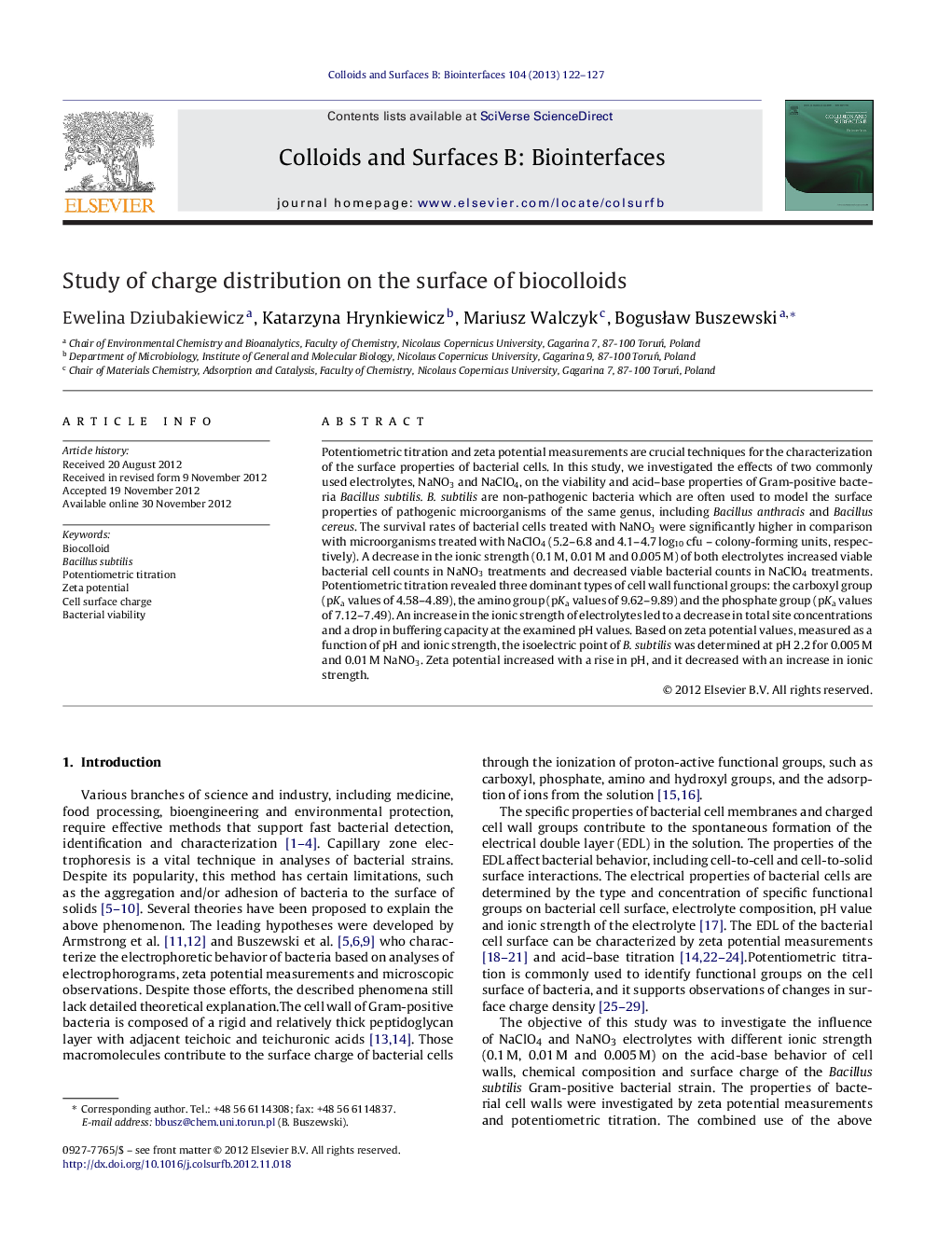| کد مقاله | کد نشریه | سال انتشار | مقاله انگلیسی | نسخه تمام متن |
|---|---|---|---|---|
| 600036 | 1454300 | 2013 | 6 صفحه PDF | دانلود رایگان |

Potentiometric titration and zeta potential measurements are crucial techniques for the characterization of the surface properties of bacterial cells. In this study, we investigated the effects of two commonly used electrolytes, NaNO3 and NaClO4, on the viability and acid–base properties of Gram-positive bacteria Bacillus subtilis. B. subtilis are non-pathogenic bacteria which are often used to model the surface properties of pathogenic microorganisms of the same genus, including Bacillus anthracis and Bacillus cereus. The survival rates of bacterial cells treated with NaNO3 were significantly higher in comparison with microorganisms treated with NaClO4 (5.2–6.8 and 4.1–4.7 log10 cfu – colony-forming units, respectively). A decrease in the ionic strength (0.1 M, 0.01 M and 0.005 M) of both electrolytes increased viable bacterial cell counts in NaNO3 treatments and decreased viable bacterial counts in NaClO4 treatments. Potentiometric titration revealed three dominant types of cell wall functional groups: the carboxyl group (pKa values of 4.58–4.89), the amino group (pKa values of 9.62–9.89) and the phosphate group (pKa values of 7.12–7.49). An increase in the ionic strength of electrolytes led to a decrease in total site concentrations and a drop in buffering capacity at the examined pH values. Based on zeta potential values, measured as a function of pH and ionic strength, the isoelectric point of B. subtilis was determined at pH 2.2 for 0.005 M and 0.01 M NaNO3. Zeta potential increased with a rise in pH, and it decreased with an increase in ionic strength.
Figure optionsDownload as PowerPoint slideHighlights
► Potentiometric titration of Bacillus subtilis in different background electrolytes were performed.
► Potentiometric titration revealed three dominant functional groups on bacterial cell surface.
► Carboxyl, phosphate and amine groups dominate on the bacterial cell wall.
► Zeta potential measurements allow to determine the isoelectric point of B. subtilis.
Journal: Colloids and Surfaces B: Biointerfaces - Volume 104, 1 April 2013, Pages 122–127